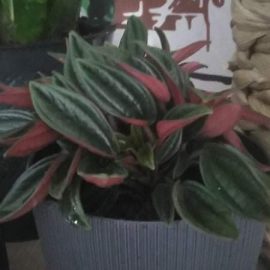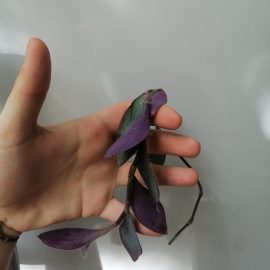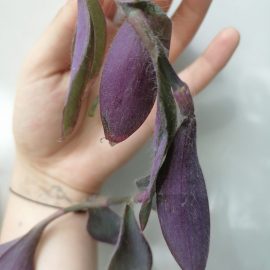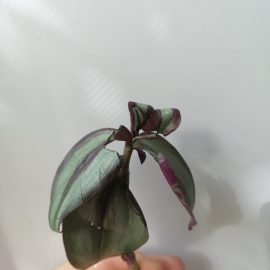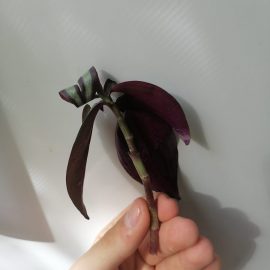Tradescantia, plant care and growing guide
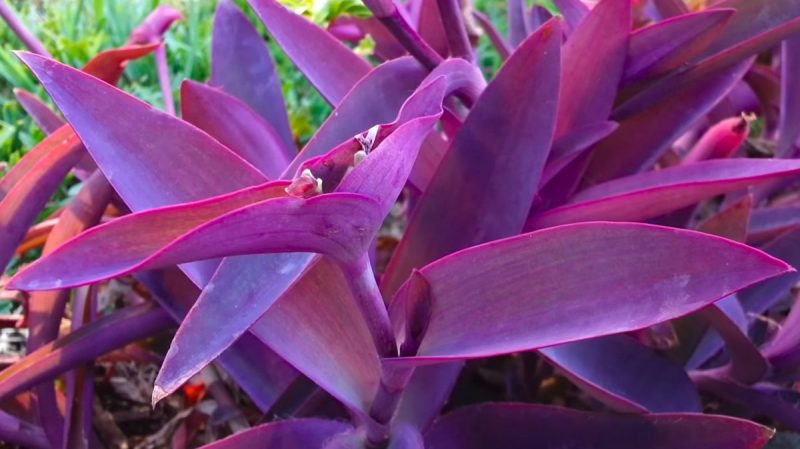
Originally from Central America, Tradescantia is a perennial plant, some of the species being hanging plants. It decorates the room thanks to its overall appearance and long and variously colored leaves, depending on the species or cultivar. The flowers are small and appear in summer.
Species and varieties
Tradescantia albiflora – it has thin shoots, the leaves are glossy green, lanceolate, with pointed tips and without petiole; the flowers are small, almost invisible and rarely appear.
Tradescantia blossfeldiana – it has thick shoots, the leaves are oval-elongated, colored in intense green on the topside and purple with light green stripes on the underside; it has fine hairs on the entire surface of the plant; the flowers appear in spring.
Tradescantia fluminensis – the leaves are small, oval elongated, with white stripes on the topside and purple on the underside.
Tradescantia pallida – the stem is more vigorous than in the case of the other species, the plant is entirely colored in purple; the leaves are lanceolate and the small, pink flowers appear in summer.
Tradescantia zebrina – the leaves are shiny, with green, silver, or purple stripes on the topside and fully purple on the underside.
Tradescantia spathacea – it has a short stem, on which are attached sessile leaves (without petiole), long, colored green with white stripes on the topside and purple on the underside.
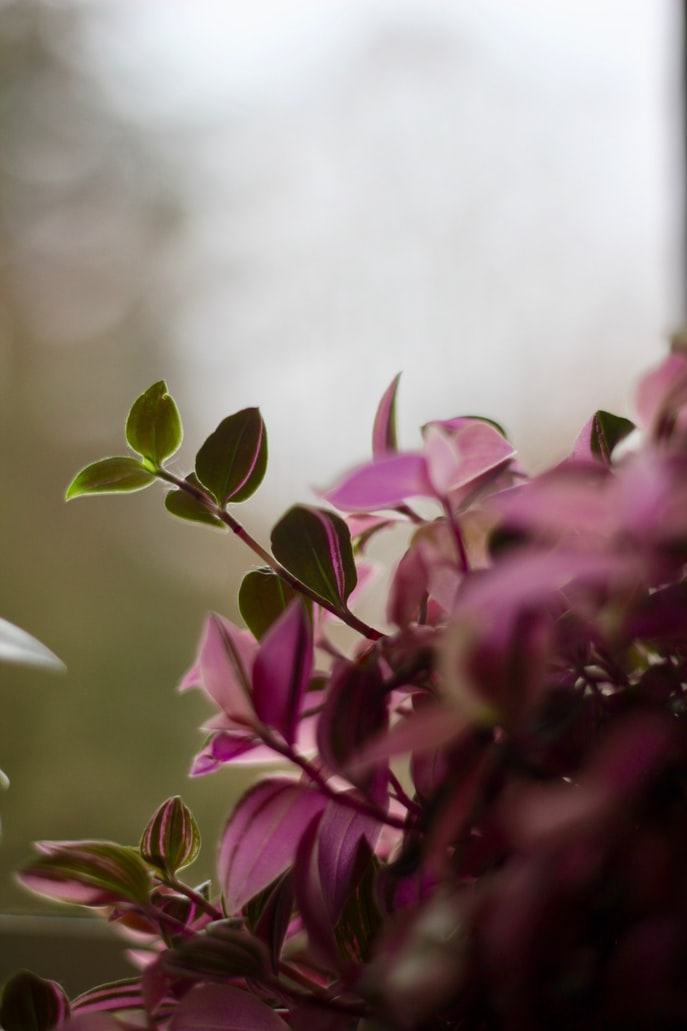
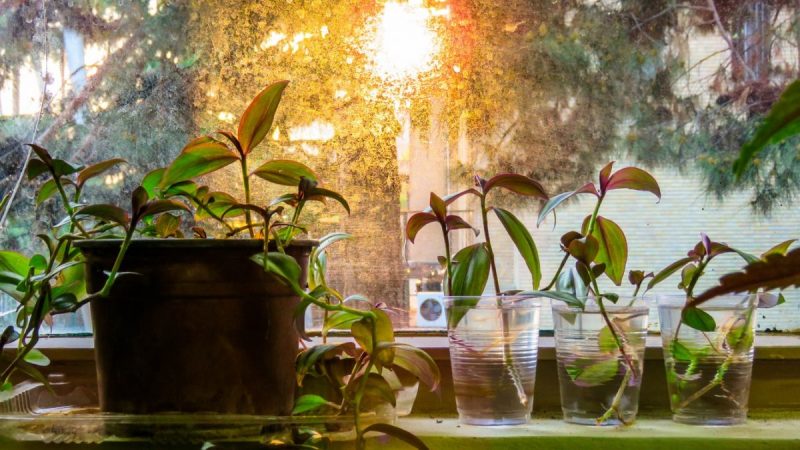
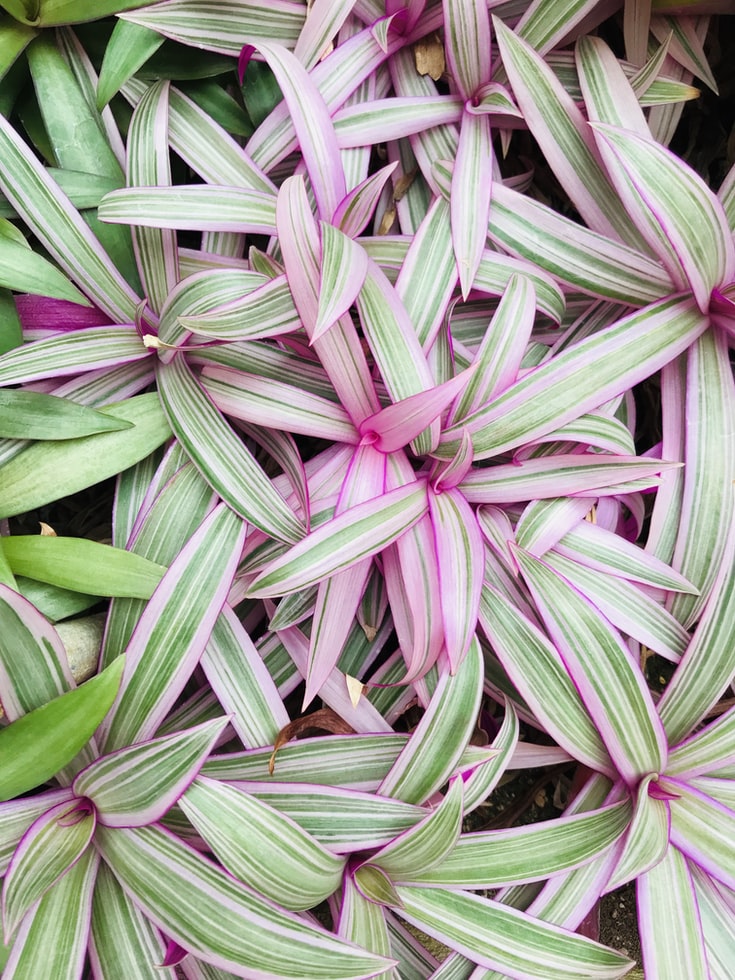
Environmental conditions
Light. Tradescantia prefers bright places all year round, but it should not be placed in direct sunlight.
Temperature. It needs a moderate temperature of 18-25° C. In winter, the optimum temperature is 12-16° C.
Humidity. During the active growth period (spring-autumn) it needs high humidity, both in the substrate and in the atmosphere.
Substrate. It must have good water drainage capacity and it can be a mixture of manure/peat and sand.
Recommended products
-
You can find products on a different store
Change Store -
You can find products on a different store
Change Store -
You can find products on a different store
Change Store -
You can find products on a different store
Change Store -
You can find products on a different store
Change Store -
You can find products on a different store
Change Store -
You can find products on a different store
Change Store -
You can find products on a different store
Change Store -
You can find products on a different store
Change Store -
You can find products on a different store
Change Store -
You can find products on a different store
Change Store -
You can find products on a different store
Change Store -
You can find products on a different store
Change Store -
You can find products on a different store
Change Store -
You can find products on a different store
Change Store -
You can find products on a different store
Change Store -
You can find products on a different store
Change Store -
You can find products on a different store
Change Store -
You can find products on a different store
Change Store -
You can find products on a different store
Change Store -
You can find products on a different store
Change Store -
You can find products on a different store
Change Store -
You can find products on a different store
Change Store -
You can find products on a different store
Change Store
Care. Tradescantia is a plant that is quite easy to tend to. To preserve the color of the leaves, the plant needs light but is sensitive to the direct action of sunlight.
Watering
It should be done regularly, so that the substrate is kept permanently moist, but not too wet. Atmospheric humidity is kept high by spraying the leaves.
Fertilization
It is not mandatory, but fertilizers for decorative plants can be applied.
Recommended products
-
You can find products on a different store
Change Store -
You can find products on a different store
Change Store -
You can find products on a different store
Change Store -
You can find products on a different store
Change Store -
You can find products on a different store
Change Store -
You can find products on a different store
Change Store -
You can find products on a different store
Change Store -
You can find products on a different store
Change Store -
You can find products on a different store
Change Store -
You can find products on a different store
Change Store -
You can find products on a different store
Change Store -
You can find products on a different store
Change Store -
You can find products on a different store
Change Store -
You can find products on a different store
Change Store -
You can find products on a different store
Change Store -
You can find products on a different store
Change Store -
You can find products on a different store
Change Store -
You can find products on a different store
Change Store -
You can find products on a different store
Change Store -
You can find products on a different store
Change Store -
You can find products on a different store
Change Store -
You can find products on a different store
Change Store -
You can find products on a different store
Change Store -
You can find products on a different store
Change Store
Repotting
It should be done in the spring, only if necessary.
Propagation
It is made through top cuttings, all year round. Rooting can be done both in glasses of water and in a solid substrate, such as sand or earth.
Recommended products
-
You can find products on a different store
Change Store -
You can find products on a different store
Change Store -
You can find products on a different store
Change Store -
You can find products on a different store
Change Store -
You can find products on a different store
Change Store -
You can find products on a different store
Change Store -
You can find products on a different store
Change Store -
You can find products on a different store
Change Store -
You can find products on a different store
Change Store -
You can find products on a different store
Change Store -
You can find products on a different store
Change Store -
You can find products on a different store
Change Store -
You can find products on a different store
Change Store -
You can find products on a different store
Change Store -
You can find products on a different store
Change Store -
You can find products on a different store
Change Store -
You can find products on a different store
Change Store -
You can find products on a different store
Change Store -
You can find products on a different store
Change Store -
You can find products on a different store
Change Store -
You can find products on a different store
Change Store -
You can find products on a different store
Change Store -
You can find products on a different store
Change Store -
You can find products on a different store
Change Store
Diseases and pests
The most common pests are mites. But some abiotic diseases caused by lack of water in the substrate or low atmospheric humidity, such as the yellowing of the leaves or the browning of the leaf tips, may also occur. Also, can appear spots on leaves.
Recommended products
-
You can find products on a different store
Change Store -
You can find products on a different store
Change Store -
You can find products on a different store
Change Store -
You can find products on a different store
Change Store -
You can find products on a different store
Change Store -
You can find products on a different store
Change Store -
You can find products on a different store
Change Store -
You can find products on a different store
Change Store -
You can find products on a different store
Change Store -
You can find products on a different store
Change Store -
You can find products on a different store
Change Store -
You can find products on a different store
Change Store -
You can find products on a different store
Change Store -
You can find products on a different store
Change Store -
You can find products on a different store
Change Store -
You can find products on a different store
Change Store -
You can find products on a different store
Change Store -
You can find products on a different store
Change Store -
You can find products on a different store
Change Store -
You can find products on a different store
Change Store -
You can find products on a different store
Change Store -
You can find products on a different store
Change Store -
You can find products on a different store
Change Store -
You can find products on a different store
Change Store
In addition:
- lack of light causes slow growth, the shoots become elongated and the leaves fade.
- low temperatures or overfertilization can cause leaf drop.
- the plant must be protected from drafts.














































































































































































































































































































































































































































